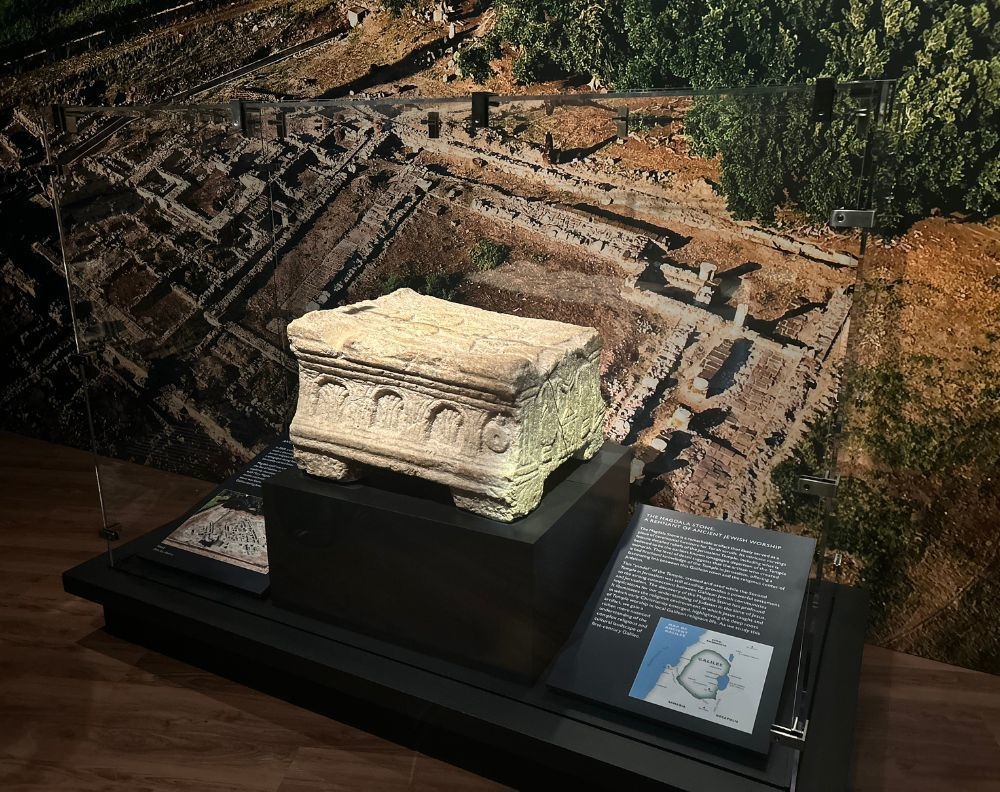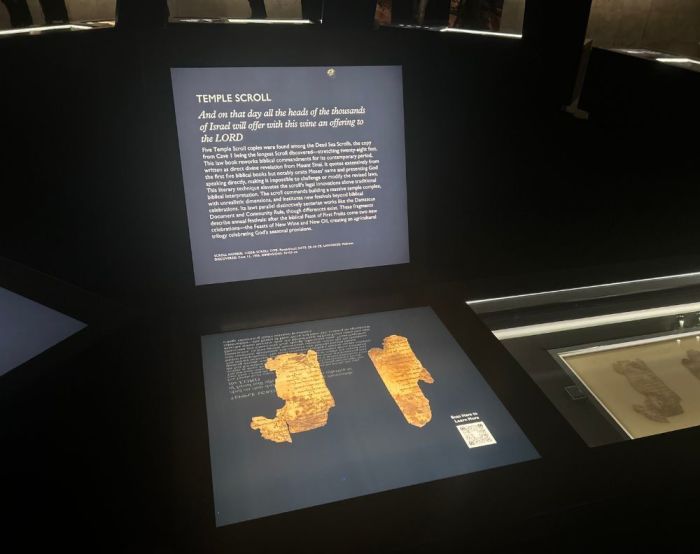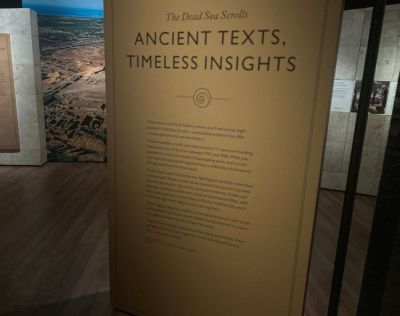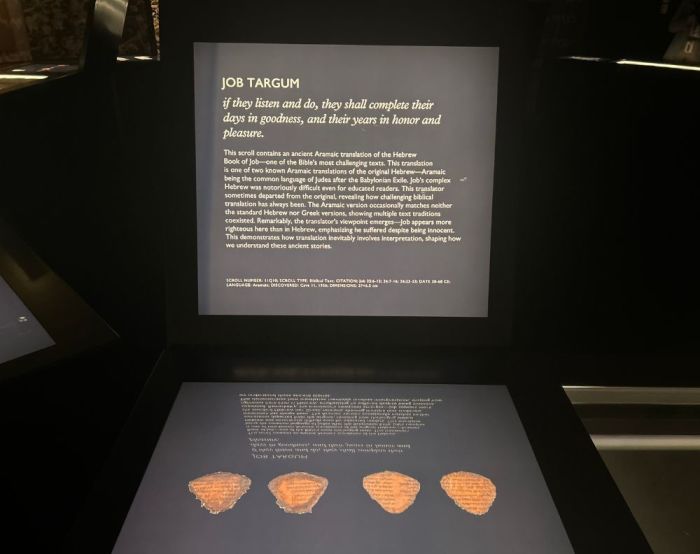

Published on: 11/20/2025
This news was posted by Apex Wealth Advisors
Description

WASHINGTON — The Museum of the Bible's latest exhibit, “Dead Sea Scrolls: The Exhibition,” features the oldest copies of biblical fragments, and Matthias Walther, the museum’s chief marketing officer, hopes it will invite nonbelievers to reconsider their assumptions about the Bible.
“When you come here, you see the actual documents. You go back to the source,” Walther told The Christian Post during a preview of the exhibit on Wednesday ahead of its weekend opening.
“And all the theories that you have about ‘Is this true,' 'Is this not true,' and ‘Can I trust the Bible or not?’ I hope this will be a step to say, ‘Man, there's something there that I need to discover,’” Walther added. “‘Maybe I need to do my homework and identify all the preconceived notions that I had about this book. Maybe they're not true?’”

The exhibition, which is the result of a partnership with the Israel Antiquities Authority and Running Subway, will open to the public on Saturday.
Three rotations of Dead Sea Scroll fragments will make their way through the museum during the exhibition’s run, with the rotations taking place from November to February, February to May, and May to September.
Visitors will have the opportunity to view various Dead Sea Scroll fragments, with the first rotation featuring: “4Q7 Genesis(g), 11Q10 Targum Job, 4Q83 Psalms(a), 4Q210 Astronomical Enoch(c), 4Q434 Barkhi Nafshi(a), 4Q491 War Scroll(a), Eschatological Commentary A and 11Q20 Temple Scroll(b).”
The fragments featured in the second rotation are: “11Q5(a) Psalms (Great Psalms Scroll Fragments), 4Q27 Numbers(b), 4Q111 Lamentations, 4Q264 Community Rule(j), 4Q448 Apocryphal Psalms and Prayer, 4Q274 Tohorot A (Purities), 4Q400 Non-Canonical Psalms A and 4Q530 Book of the Giants(b).”
As part of the final rotation, the museum will display: “4Q58 Isaiah(d), 4Q197 Tobit(b), 4Q130 Phylacteries C, 4Q534 Birth of Noah(a), 4Q218 Jubilees(c), 4Q275 Communal Ceremony, 4Q258 Community Rule(d) and 4Q271 Damascus Document(f).”

“Maybe you don't walk away and become a believer, but I think it certainly will create a reverence and a respect for what this book is and the power that it has and how it transcends time,” Walther told CP.
The Dead Sea Scrolls, first discovered by Bedouin shepherds in the Qumran caves near the Dead Sea in 1947, are a collection of ancient manuscripts dating back to the third century BCE to the second century CE. In addition to containing portions of the Hebrew Bible, the scrolls paint a picture of Jewish beliefs and practices during the Second Temple Period.
Walther also addressed the controversy surrounding the museum’s previous Dead Sea Scrolls exhibit, which was thought to include 16 fragments of the ancient manuscript. After funding research into the pieces, the museum announced in 2018 that five of the tested fragments were forgeries.
Two years later, the museum announced that independent researchers had determined that all 16 fragments of the Dead Sea Scrolls were modern forgeries.

Regarding the latest exhibition, Walther said the museum has “ultimate confidence” that the Dead Sea Scrolls on display as part of the new exhibit are authentic, highlighting the museum's partnership with the Israel Antiquities Authority.
“They are the authority in terms of anything archaeological that's found in Israel,” he said. “And so, they do the discovery, the excavation, the preserving and the exhibition of the artifacts that they find.”
“So there's no higher authority in terms of the integrity of those documents,” Walther added.
In addition to the Dead Sea Scrolls, visitors will have the opportunity to view 200 artifacts from Israel's National Treasures of the Israel Antiquities Authority, according to the museum’s press release. The artifacts include inscribed pottery shards from Masada and a scroll wrapper from Qumran.
The Museum of the Bible is currently the only place on the East Coast where people can see these artifacts in person.
Other exhibition highlights include the Magdala Stone, a carved block decorated with various symbols, including a seven-branch menorah that was discovered in 2009 at a first-century synagogue where Jesus ministered in the region of Galilee.
Another item on display in the exhibition is wood fragments from a first-century fishing boat uncovered in the Sea of Galilee during a drought in 1986. The fragments, also known as the “Jesus Boat,” offer insights into what the boats mentioned in the New Testament might have looked like.
“This exhibition is made possible by our close partnership with the Israel Antiquities Authority. It brings together some of the most important archaeological discoveries in human history,” Bobby Duke, chief curatorial officer at the Museum of the Bible, said in an earlier statement provided to CP.
“It is an incredibly rare and unique opportunity to see the oldest copies of biblical fragments alongside many more artifacts that help us to better understand the biblical world,” Duke added.
News Source : https://www.christianpost.com/news/dead-sea-scrolls-exhibition-reveals-power-of-biblical-texts.html
Other Related News
11/20/2025
By Leah MarieAnn Klett Assistant Editor Thursday November 20 2025Bobby Gruenewald speaks...
11/20/2025
By Ryan Foley Christian Post Reporter Thursday November 20 2025Forrest Frank Dove Award...
11/20/2025
Tax bill got you down It may be time to make some adjustments so next years tax season isn...
11/20/2025
In March 2026 believers from around the world will have the opportunity to experience Scr...
11/20/2025












